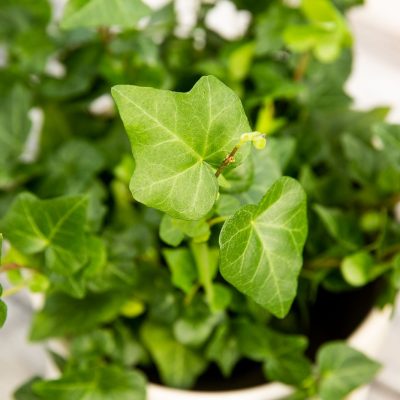Plant Care
Indoor Ivy Care
Ivy can be grown indoors as well as outside and are very low maintenance. The care guide below is specifically for care of indoor Ivies.
Light – Ivies do best in moderate to bright, indirect light. Variegated Ivies tend to prefer bright light while solid greens want more moderate levels. Direct sunlight may lead to scorching and low light can cause the vines to become leggy.
Water – Allow Ivies to dry out at least half way before watering. Be careful not to overwater since watering too often can lead to leaf drop and root rot. If your Ivy’s leaves are developing crispy brown spots, the plant is getting too much water.
Soil – Select a well-draining soil, like Espoma Potting Soil, as Ivies do not want to stay too wet. If your soil is too staying wet, add perlite or decrease watering.
Temperature – Unlike most houseplants, Ivies prefer slightly cooler temperatures than most houseplants. 50° to 70° is ideal.
Humidity – Ivies do enjoy higher humidity levels, though they can do well in average humidity. A nearby humidifier, regular misting or a tray of pebbles and water are easy methods of increasing humidity. If your bathroom gets enough light, it’s a great source of humidity and makes a great location for many houseplants.
Fertilization – Fertilize regularly spring through fall with a balanced fertilizer, like Bonide Liquid Plant Food, according to the label.
Size – Ivies are vigorous growers and their vines can reach 80 feet in length if allowed, though they can easily be maintained at a much smaller, and more manageable, size by pruning. They work well as both a trailing and climbing plant.
Repotting – Allow to become moderately pot bound before repotting and select a container no more than 2 sizes larger than its current pot with good drainage.
Propagation – Easily propagated via cuttings.
Toxicity – Ivies are mildly toxic to people and pets when ingested.



